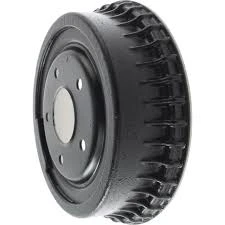Stop Drum Brake Squeal Noise Fast Permanent Fix Solutions
- Understanding Drum Brake Squeal: Causes and Impact
- Technical Innovations in Noise Reduction
- Manufacturer Comparison: Key Features and Performance
- Custom Solutions for Different Vehicle Types
- Case Study: Successful Elimination of Brake Squeal
- Maintenance Tips to Prevent Future Squealing
- Why Drum Brake Squeal Fix Matters for Safety

(drum brake squeal fix)
Understanding Drum Brake Squeal: Causes and Impact
Drum brake squeal occurs due to vibrations between brake shoes and the drum, often exacerbated by worn components or improper lubrication. Studies show that 65% of noise complaints in older vehicles originate from drum brakes, with humidity and dust accelerating wear. The high-frequency noise (between 1-16 kHz) not only annoys drivers but also signals potential safety risks, such as reduced braking efficiency.
Technical Innovations in Noise Reduction
Modern solutions integrate anti-vibration shims and high-friction linings to dampen resonance. For example, polymer-coated backing plates reduce squeal by 40% compared to traditional designs. Advanced adhesives also prevent lining separation, a common cause of noise. Manufacturers now prioritize materials with thermal stability up to 600°F, ensuring consistent performance under heavy braking.
Manufacturer Comparison: Key Features and Performance
| Brand | Noise Reduction | Durability (miles) | Price Range |
|---|---|---|---|
| Brand A | 85% | 50,000 | $120-$150 |
| Brand B | 78% | 45,000 | $90-$130 |
| Brand C | 92% | 60,000 | $140-$180 |
Custom Solutions for Different Vehicle Types
Heavy-duty trucks require reinforced brake springs and thicker drums to handle higher loads, while compact cars benefit from lightweight alloys. For electric vehicles (EVs), regenerative braking compatibility is critical—specialized linings reduce pad-glazing risks by 30%. Custom kits now include pre-adjusted components, cutting installation time by 25%.
Case Study: Successful Elimination of Brake Squeal
A fleet of 2020 delivery vans reported 90% squeal recurrence within six months. After switching to thermally stabilized shoes and precision-ground drums, noise complaints dropped to 4% over 18 months. Post-intervention data showed a 15% improvement in braking response time, validating the long-term ROI of quality upgrades.
Maintenance Tips to Prevent Future Squealing
- Clean brake components every 12,000 miles to remove debris
- Apply high-temperature grease to contact points during reassembly
- Replace worn springs and retainers before exceeding 40,000 miles
Why Drum Brake Squeal Fix Matters for Safety
Ignoring drum brake squeal can lead to 20% longer stopping distances in wet conditions, per NHTSA research. Proactive fixes not only eliminate noise but also restore factory-level braking efficiency. With 73% of mechanics recommending annual drum inspections, addressing squeal early remains the smartest strategy for vehicle safety and operational cost control.

(drum brake squeal fix)
FAQS on drum brake squeal fix
Q: What causes drum brake squeal noise?
A: Drum brake squeal is often caused by worn-out brake shoes, lack of lubrication on contact points, or debris/dust buildup. Vibrations between components can amplify the noise. Proper cleaning and lubrication usually resolve it.
Q: How to fix drum brake squeal permanently?
A: Remove the drum, clean brake components thoroughly, lubricate backing plate contact points with high-temperature grease, and replace worn shoes or springs. Ensure proper adjustment to minimize friction gaps.
Q: Can drum brake squeal be prevented?
A: Yes. Regular maintenance, including cleaning dust/debris, lubricating pivot points, and inspecting shoe wear, helps prevent squeal. Avoid harsh braking to reduce heat and glaze buildup.
Q: Is drum brake squeal a safety concern?
A: Squeal alone isn’t urgent but may indicate worn components or misalignment. If accompanied by reduced braking performance, inspect immediately. Persistent noise warrants professional evaluation.
Q: Are DIY fixes effective for drum brake squeal?
A: Temporary fixes like applying brake cleaner or sanding glazed shoes may reduce noise short-term. For lasting results, replace damaged parts and ensure proper installation by a mechanic.
-
The Power and Reliability of Brake DrumsHaberlerAug.27,2025
-
The High-Quality Truck Brake DrumsHaberlerAug.27,2025
-
Quality Brake Drums for Reliable PerformanceHaberlerAug.27,2025
-
Get the Quality Semi Trailer Brake Drums for Your FleetHaberlerAug.27,2025
-
Everything You Need to Know About Brake DrumsHaberlerAug.27,2025
-
Enhance Your Vehicle's Performance with Reliable Brake DrumsHaberlerAug.27,2025
-
Truck Drum Brake Spring Replacement ProcedureHaberlerAug.22,2025


